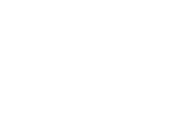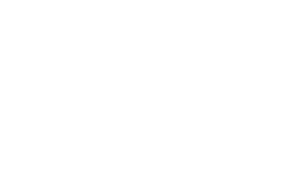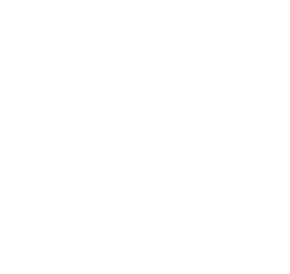 |
 |
 |

|
Tiina Sarapu’s installation 2013
|
|
 |
ESTONIAN GLASS 2013
DESTINATIONS ACHIEVED?
In 2009 I wrote an article for the magazine Fjoezzz „JOURNEYS TOWARDS DESTINATIONS“. What were these destinations and have they been achieved? I believe some are, and today, of course, there are countless new ones. There have been changes in our social and political life meaning that it has all had its impact on cultural life as well, part of which the glass scene is.
People have changed, young peole particularly. It can be said, I believe, that interest to study glass as a major in universities and colleges is not very big. Day after day we read about closing glass departments, schools, glass factories in many countries. We are concerned about traditional glass skills disappearing and although multiple new technologies daily accrue, they cannot replace the possibilities provided by the craft, touch of human hand and breath.
|

|
Posted 5 January 2014
|
Share this:
|
|
The statement that Estonian professional glass art will be 80 years of age in 2016/2017 is based on the date of the beginning of methodical glass education at the then State School of Industrial Art – today’s Estonian Academy of Arts (www.artun.ee; http://vimeo.com/42187015) in Tallinn in 1936/37. The roots go even deeper as before 1628 – the date of the remains of a workshop based on the earliest archaeological evidence on the island of Hiiumaa – glass was made in the area. Several glass finds and written documents are of proof. We cannot eliminate the past, neither its inspirations nor limitations.
Different periods have left their imprints on today’s makers and their art. Collective memory proves itself powerful by making the creations of the artists of one region differ from another; even the visually similar works of art can carry an absolutely different concept dependent on the author’s background. The 50 years of Soviet regime certainly limited both the issues and the techniques in Baltic glass scene, but at the same time made people inventive. To have a limited range of techniques and a whole list of prohibited themes paid its toll in many ways, but occasioned thinking in symbols, created individual expressive languages, made people also work more with their hands – one of the basic reasons to be involved in craft arts – a way out of lacking specific materials, machines and kilns. Cold-work, wheel-engraving, acid-etching were the approaches in use. The beginning of the 1990s brought along freedom, knowledge and know-how. The first glass studios were started, modern kilns and materials became available.There has ever since been an unseen before atmosphere of curiosity to pursue new ways of making glass, but also efforts to gain and retain uniqueness.
On the first day of 2014 it seems appropriate to take a look back on the previous year and try to specify the most important events in the glass-making of the area. I must say there is an impressive list and it’s very difficult to pick only a few from it. For a small country with 1,5 million inhabitants to have nearly 40 glass events including international, national, group and individual exhibitions looks like a lot.
One of the most memorable events with thousands of visitors was related to the 385 anniversary of Hüti glass works founded in 1628 by a Swedish nobleman Jacob de la Gardie on the Estonian island Hiiumaa. The exhibition „Taken from sand“, curated by glass designer Kalli Sein took place in July in the ruined parsonage of Reigi on the island, enhancing the brightness and lumination of glass in contrast to the gloomy structures of the old limestone walls. http://reigipastoraat.wordpress.com/2013/07/30/exhibition-from-sand-to-in-reigi-rectory-information-in-english/
|
|
|
|
|

|

|

|

|
|
Several student exhibitions have also taken place in galeriiPINK: in 2013 „Ehe ehe“ („Real jewel“) (http://www.blurb.com/books/4953681-ehe-ehe) presented wearable glass full of meaning and questions by glass students. The collection was tested on the runway of ERKI fashion show (http://www.elu24.ee/1242594/erki-moeshow-2013-ehe-ehe-eka-klaasikunst/1770596)
„Interventions“ by the 2013 graduates of glass specialty showed the multiplicity of glass as a material and brought forth its capacity of influencing and intervening with its surroundings.
Gallery „Okapi“ (https://www.facebook.com/OkapiGalerii) is situated in the very centre of the Old Town thus being approachable also to the numerous visitors of Tallinn. Birgit Pählapuu and Raili Velt started their own business of lampworking, the gallery presenting both their own works consisting mainly of colourful beads, and also applied art objects of other artists. The third founder of the gallery, Temuri Hvingija, has brought in photography of contemporary Estonian photographers.
Last but not least, Estonian glassmakers adore traveling, naturally together with their glass. Cheongju International Applied art Biennial in South-Korea showed among others creations of 17 Estonian artists including glass makers Eeva Käsper, Tiina Sarapu and Piret Ellamaa. Karin Mölder with her objects „Water Thoughts“ and 2 x 2“ won the first prize of „Glasplastik & Garten“ in Münster, Germany. Several young glass artists participated in the prestigious Stanislaw Libensky Award in Prague, the Czech Republic and also in Zwieseler Kölbl, Germany. „Mare Balticum“, an exhibition curated by Norbert Kalthoff (Germany) and Mare Saare took place in Galerie Ritterswürden in Zwiesel including Piret Ellamaa, Alexandra Geyermann and Hermann Ritterswürden (Germany), Eeva Käsper, Peeter Rudas, Mare Saare, Maret Sarapu, Tiina Sarapu. The works showed most of the techniques popular in Estonia today: fusing, slumping, engraving, blowing and pâte de verre. http://ekaklaasikunst.wordpress.com/2013/08/24/mare-balticum
|
|
|
|
|

|

|

|
Every summer for the last ten years Days of Glass take place in Haapsalu, at the Evald Okas Museum. Kai Koppel, a daughter of the famous Estonian painter Evald Okas, has with a small group of enthusiasts kept the tradition alive and developed the event into a popular international symposium. This year’s theme „Impression“ enhanced the spontaneous, creative and playful character always present in these Days. Torsten Rötzch (Germany), Ed van Dijk (Netherlands), Olga Kiritshek and Gala Krivolapova (Russia), Remigijus Kriukas, Indre Stulgaite-Kriukiene and Julia Pociute (Lithuania), Kai Koppel, Kati Kerstna, Kairi Orgusaar, Herbert Orgusaar, Toomas Riisalu and many others participated this year. http://www.evaldokasemuuseum.ee/klaasipaevad/2013.html
At the beginning of the article there seemed to be a few dark notes but in the end, looking both back and forward, the situation tends to look a lot better. For the seventh time this year the national competition for primary and secondary school students „Minu klaas/My glass“, organized by Kaja Vaikre and curated by prof Maie-Ann Raun took place with more participants than ever. Works, made under the guidance of dedicated teachers were mainly of high quality, often using kiln-techniques but also stained glass, engraving, and including even a few blown objects. This allows to hope that the internest to study glass will not totally disappear. And even if not many of the participants start their career as glassmakers, they will be an interested and understanding audience.
„When arrived, just keep going on“, as Eili Soon states in the concept of her exhibition „To be“.
1 January 2014
Mare Saare (b. 1955, Tallinn, Estonia) is head of the department of glass of the Estonian Academy of Arts in Tallinn since 1993. During her career as an artist and educator, she has participated in, as well as curated several exhibitions and projects and lectured both in Estonia and abroad.
|
|

Kristiina Oppi: Ideogramm, 2013
|
|
|
|
|
|
|
|
|
|


